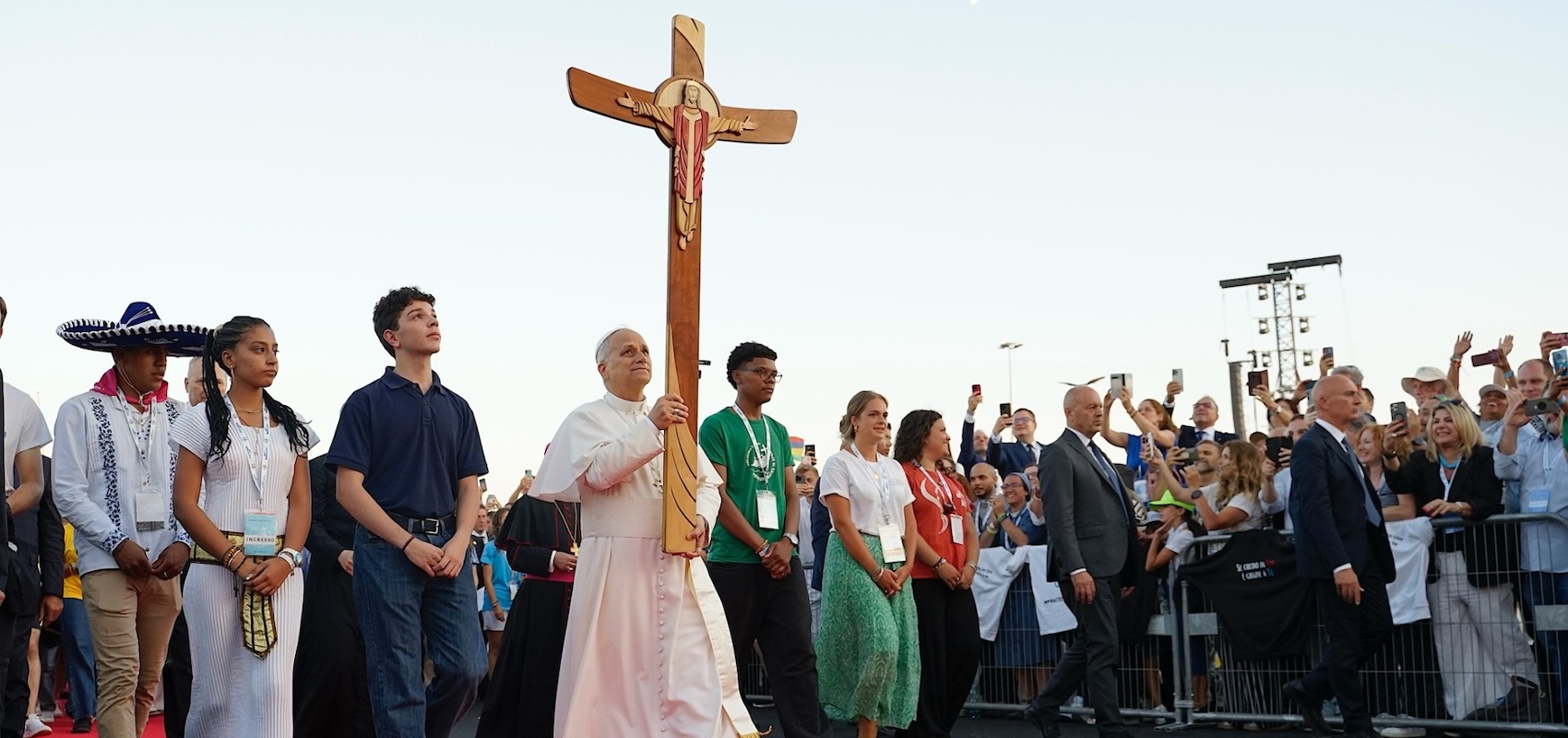
As a former low-church Protestant who joined the Catholic Church, I had to adjust to its reliance on rituals that may seem out of place in today’s culture. I remember seeing my first relics in Italy as a teenager and being genuinely put off by the almost cultish reverence for physical objects. Over time, however, I’ve come to appreciate the Catholic commitment to combating evils in the world right now. There is so much suffering, much of it created by humans, that could be alleviated by a return to Christ. And that’s why I like the 2025 Jubilee Year so much.
The Catholic Church’s jubilee celebrations have a biblical basis. In chapter 25 of Leviticus, the Lord commands Moses to “Consecrate the fiftieth year and proclaim liberty throughout the land to all its inhabitants. It shall be a jubilee for you; each of you is to return to your family property and to your own clan” (25:10). The text goes on to describe how those who had sold themselves essentially into slavery would be freed in the Year of Jubilee. It emphasizes justice and mercy during the time of celebration: “In this Year of Jubilee everyone is to return to their own property. If you sell land to any of your own people or buy land from them, do not take advantage of each other” (25:13–14).
The first Jubilee Year celebrated in the Catholic Church was declared by Pope Boniface VIII in 1300. He had witnessed thousands of pilgrims descend on Rome around Christmas of 1299, which moved him to initiate a year emphasizing the forgiveness of sins. The pope understood then, as the Church understands now, that people need an external reset from wars, the plagues (who can forget Covid?), and the daily deaths that mark ordinary existence.
As a modern society, we are a long way away from remembering biblical exhortations, and that is why the scale and function of the Catholic Church is more important than ever. In an era of mass distraction, the pope has as good a bully pulpit as anyone in focusing his flock on what matters in life. In a pervasive age of anxiety brought on in large part by digital technology, Pope Leo XIV urged the young gathered in Rome for the Jubilee of Youth event to “Aspire to great things, to holiness, wherever you are.”
“Do not settle for less. You will then see the light of the Gospel growing every day, in you and around you,” the pope proclaimed. Leo speaks by example. His upbringing was modest, but he strived for greatness. Whether that was studying for a doctorate in canon law at the Pontifical University of St. Thomas Aquinas, running the Order of St. Augustine, or leading the faithful in Peru, this is a leader whom strivers can relate to.
As a Zoomer, it’s not uncommon to run into older generations who have a misguided belief that things are easier for young people now than when they were growing up. Things have certainly changed in some ways for the better; internships are sometimes paid, or healthcare might be more accessible for certain groups. But housing costs are much higher, and college is more expensive. There’s a reason the president’s populism has captured the American imagination. Pope Leo does not imbibe that conceit that things are the best they have ever been. “We are closer than ever to young people who suffer the most serious evils, which are caused by other human beings,” the pope said to the crowd one million strong.
All of this is to say that it is no wonder the Catholic Church continues to attract converts from classes of people who crave living up to their full potential. I’ve seen it here in Washington, D.C. What I’ve noticed is that the axiom that “the center cannot hold” is true. Rarely do I find the young adult who chooses a historical church, like the Lutherans, without some familial tie to it. Instead, I see that individuals drawn into Catholicism or evangelicalism are usually of the Reformed variety. When it comes to young adults who are the product of mixed marriages like Lutheran and Catholic, I’ve also observed a normative trend to joining the Roman Church.
I believe a lot of this has to do with the relative consistency and stalwartness on social issues of the Catholic Church in recent decades. Young people have observed other churches capitulate to the spirit of the age, and they have been sorely served by that spirit. To put it succinctly, the child of divorce is less likely to pick a church that was created in part because of a divorce. The importance that Catholics place on institutions no doubt explains why it is the Catholic Church that is becoming the new mainline in how it functions as a refuge for influential Americans in the United States.
